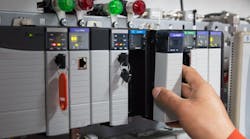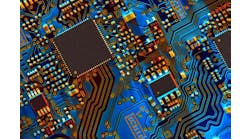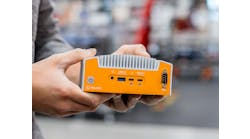In Dick Morley’s book, The Technology Machine: How Manufacturing Will Work in the Year 2020, he references a 1949 Popular Mechanics article that predicted computers may not weigh more than 1.5 tons in the future.
Boy, was that ever right.
Industrial computers are a different breed; they are not personal computers (PCs). When the programmable logic controller (PLC) was first introduced into the wild, we were told to not mention the word computer, which in reality it was. If that word was mentioned, then the plant’s IT department had to get involved, which in those days was a real issue. All things computer had to be approved and regulated by that department.
It was new. How could they ever understand how it functioned and what it did? So, it was a controller for industry and the plant floor, owned and operated by the engineering department and maintenance. Whew.
The first industrialized computer—not minicomputers, such as the Digital Equipment Corporation (DEC) PDP-11/12—came into being in the 1980s. It ran on DOS, not Unix, and ushered in a brand-new world. The plant floor had a platform of its own as such. Software for supervisory control and data acquisition (SCADA) and human-machine interface (HMI) began to emerge to run on these machines. PLC programming software also became available, giving the industry a window into it all.
These machines were never going away. DOS was not real-time as such, so operating system add-ons came into being to offer real-time extensions to allow those processes to utilize that feature if they needed to. The age of what was called “PC-based control” was born.
All computers were tagged colloquially as PCs, so the idea of industrialized computers got muddled. Confusion was rampant in the user community because they didn’t know why an industrialized computer was twice the cost of a standard Dell or IBM PC.
The dividing line is as blurred now as it ever was. Brick-style PCs with fanless designs, better heat transfer, solid-state drives and switching power supplies with better filtering are commonplace.
External power filtering and conditioning is highly recommended in any installation, which makes one wonder: Why pay the extra money for a ruggedized computer?
Arguments vary for an industrial PC vs. a commercial-grade version. The constants, however, are temperature range, vibration specifications and mechanical shock. If the PC is in a cabinet or even located on the door, the vibration and shock issue might go away. The temperature and environmental issues, such as dust and airborne stuff, still exist.
The other main argument is the 24/7 runtime and availability. This is true; the computer has to do this. I had computers running my Visual Studio HMI on 20 computers for more than 10 years. They only rebooted for upgrades in both hardware and software. They just ran. They were commercial-grade PCs since the environment was like your living room.
On a high-pressure injection-molding machine where vibration, temperature and contaminants are present, then you would be advised to employ a truly ruggedized computer.
Power issues are also of major concern. If you have dirty power, a standard commercial PC’s power supply may protect you once with its minimal surge protection and filtering, but multiple hits will kill it. Depending on the function of the device, that may be detrimental to the operations of the plant.
The temperature issue is by far the greatest advantage of a ruggedized device. The components used tend to be military specification (Mil-Spec), which allows the computer to operate at higher ambient temperatures. When I checked the specifications on a Dell XPS desktop, it didn’t even mention temperature. Zero to 60 °C is the common non-condensing temperature range for industrialized devices.
The advent of solid-state drives allows for the vibration specification to become less important. Universal-serial-bus (USB) drives replace floppy-disk, compact-disc (CD) and digital-versatile-disc (DVD) drives, as well. Part of the real problem with the device is the software and drivers that are loaded. One of the biggest problems when we started using PCs, in general, is that the multimedia drivers would crash the device even when you weren’t using them.
All we need in a computer in an industrial setting is navigation, motherboard, slots for networking other than Ethernet, if required, and video as a minimum. Additional stuff only adds to the potential for failure and crashes.
Pick your fights. Ruggedized hardware in my opinion is only needed when its needed. Profound, I know.





